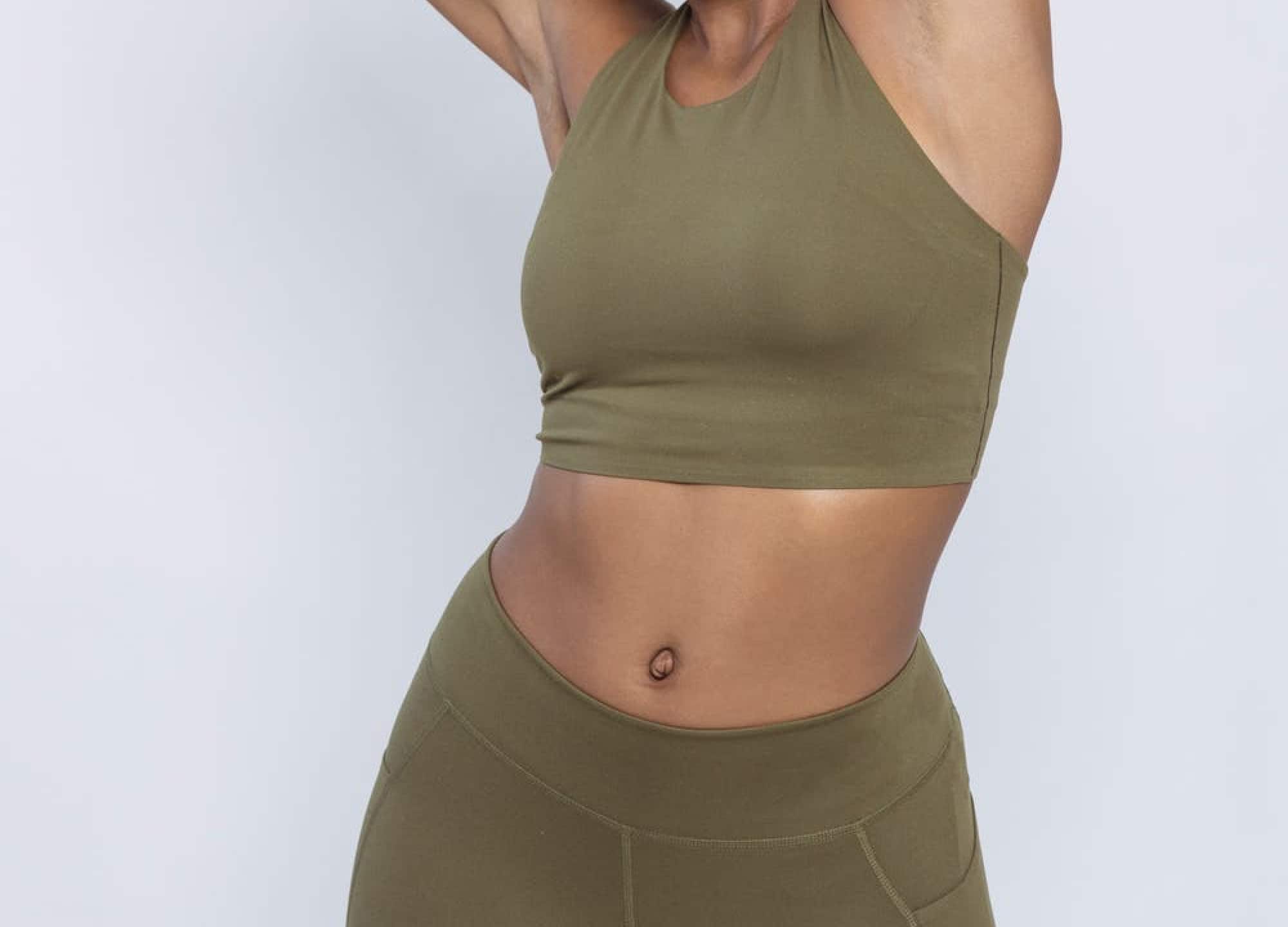Our annual Most Worth It list recognizes the most-loved aesthetic procedures—from noninvasive tweaks to the gold standard in surgery—as chosen by RealSelf community members like you. This story highlights one or more of the 44 Most Worth It honorees for 2022; you can see the full list and learn more about patients’ favorite procedures here.
Souvenirs. This euphemism for scars has always struck us as a little curious. In some instances, sure, it’s fitting—certain marks do represent identity-shaping experiences or elicit heady memories—but in other cases, scars are decidedly less sentimental. In plastic surgery, they’re generally regarded as the price of doing business—and a small price, at that, when weighed against the stunning transformations that only a scalpel can deliver.
Consider the tummy tuck: the procedure not only removes excess skin—and along with it, lower-belly stretch marks and C-section scars (“souvenirs” many are happy to lose)—but also reconnects separated abdominal muscles (commonly pulled apart during pregnancy), for a flatter stomach and stronger core. Yet a significant scar—one that spans the pelvis, hip to hip—comes standard with the surgery. While this likely gives potential abdominoplasty patients pause, it’s hardly an all-out deterrent; just ask the 160,000-plus people who had tummy tucks in 2020.
While more indelible than most mementos, scars do fade, to an extent, with time (certain surgeon-prescribed treatments can also help to speed things along). The following unadulterated snapshots—submitted by surgeons and patients and accompanied by their honest impressions—reveal the gradual evolution and myriad iterations of tummy tuck scars.
Week three post-op and one year post-op
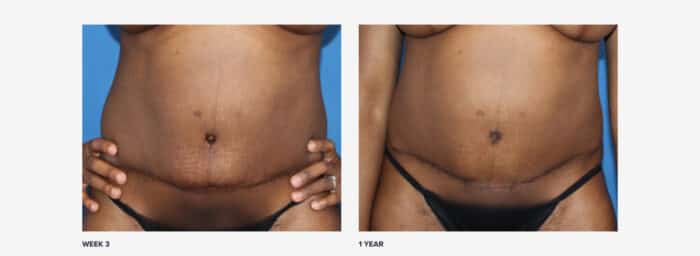
“Being a patient of color, she was concerned about keloids or hypertrophic scarring. We started her early on lymphatic massage, silicone gel, and incision massage. This combination resulted in a flat incision, with no widening or hypertrophy.” —Dr. Troy A. Pittman, board-certified plastic surgeon in Washington, D.C.
One month post-op
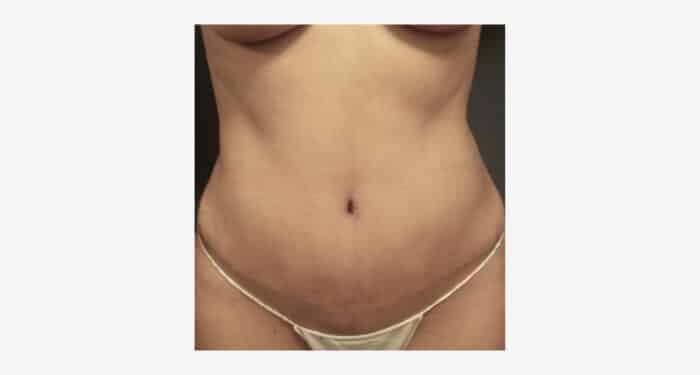
“This patient is only one month post-op. The scar is still very fresh but already healing nicely. Due to this patient’s skin type, she is prone to healing without any scarring issues, such as hypertrophic or keloid scars.” —Dr. Umbareen Mahmood, board-certified plastic surgeon in New York City
Week six post-op and 18 months post-op
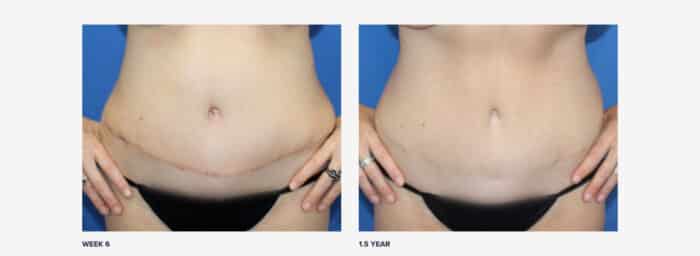
“For a fair-skinned patient, the redness from the incision definitely faded more quickly than average. At six months, she also underwent a small dog-ear correction at the far edges of her incision, which is very common. She had her revision in the office, under local anesthesia.” —Dr. Pittman
Related: How Tattoos Can Create a Natural-Looking Belly Button Post-Tummy Tuck
10 weeks post-op
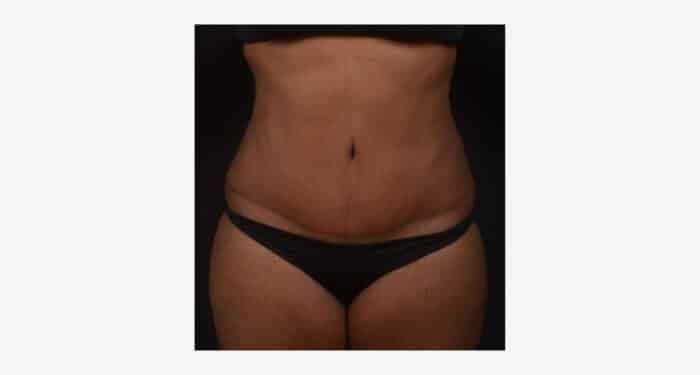
“This patient underwent a tummy tuck and liposuction with me and is shown at 10 weeks after surgery. She is using silicone gel on her scars, which helps them heal and fade with time. This patient has been very compliant with her post-surgery scar regimen and garments, which has made a big difference in her progression. I’ve found that, overall, scarring is more minimal when we can decrease tension and pull at the incision line—something I do with progressive tension sutures [which transfer tension to the deeper tissue layers].” —Dr. Amaka Nwubah, a board-certified plastic surgeon in Nashville, Tennessee
Three months post-op
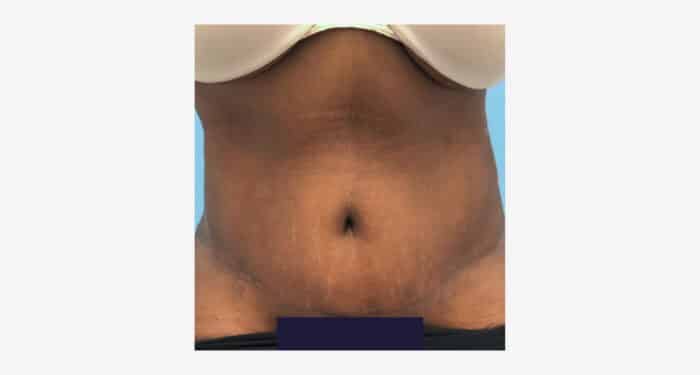
“This 55-year-old patient was compliant with silicone scar gel as well as scar massage. Her final scar result will show at one year post-op, and I anticipate she will continue to heal well.” —Dr. Mahmood
Three months post-op
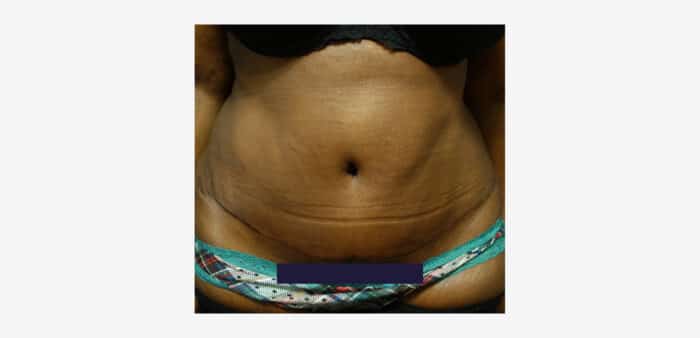
“The patient was also compliant with silicone scar gel as well as scar massage. We’ll see her final scar at the one-year mark, but I expect her to continue to heal well.” —Dr. Mahmood
One year post-op
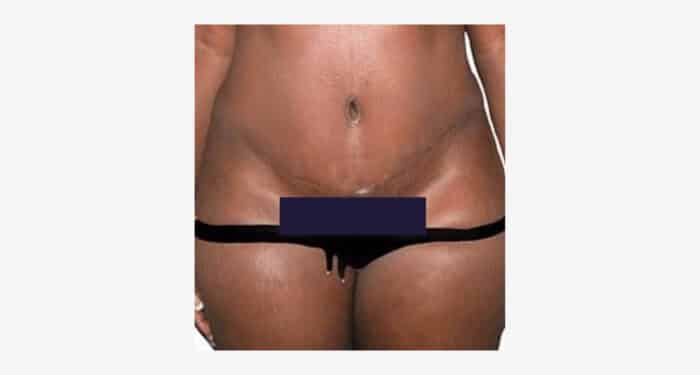
“This 38-year-old woman had stretched abdominal muscle (diastasis recti) caused by prior pregnancies plus stretch marks and an overhanging shelf of tissue. Her muscle tone was good, which made her an ideal candidate for tummy tuck and liposuction of the flanks. In addition to removing all the stretched skin from above her belly button to her pubic bone and tightening her muscle layer to correct the diastasis recti, I curved the incision line in a ‘bikini string curve,’ which accentuates the waist and hip lines.
“Her health-conscious, balanced diet and the fact that she is a nonsmoker who does not take any steroid medicines, which can impair wound healing, contributed to excellent scar healing. But most important, meticulous incision closure with progressive tension sutures—placing sutures from top to bottom, inside the abdominal space, to offload tension from the healing incision line—was crucial. Compression garments were worn, to provide support and control swelling. My partner, board-certified dermatologist Dr. Noëlle Sherber, performed laser scar treatment, which helped our patient’s scar to fade over the course of a year.” —Dr. Ariel N. Rad, a board-certified plastic surgeon in Washington, D.C.
One year post-op
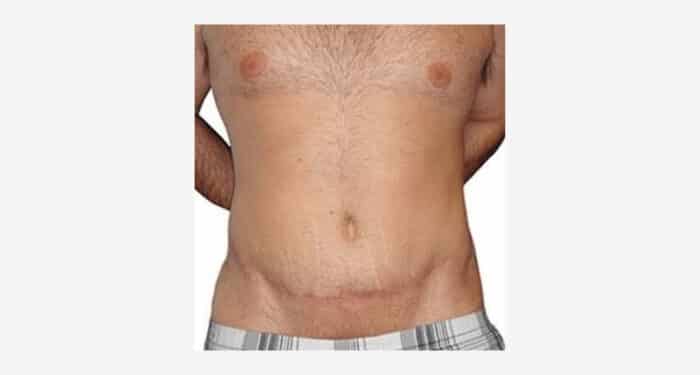
“This 40-year-old man lost 75 pounds from a safe diet and exercise, going from 295 to 220 pounds, and he leads a very health-conscious lifestyle. He had a tummy tuck and liposuction of the flanks with muscle tightening. I paid close attention to his abdominal contour, to accentuate muscle highlights and give a more sculpted, masculine look to his abdomen and flank area.
“I was concerned about optimizing his wound healing because he had thin skin, as indicated by stretch marks. So in addition to meticulous surgical closure, I again used progressive tension suture technique. I advised compression garments and aggressive scar therapy with tension-reducing silicone sheeting, moisture therapy, and laser treatment performed by Dr. Sherber.” —Dr. Rad
One year post-op
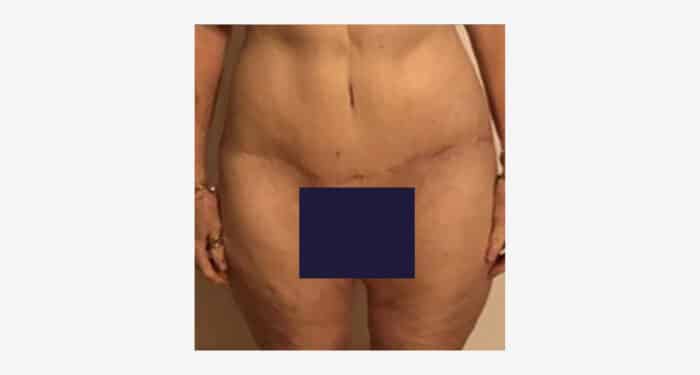
“This patient underwent a lower body lift one year ago. The incision for a lower body lift is the same as that for a tummy tuck. Her scar has faded tremendously and is barely visible. She is compliant with her scar gel, and we also decreased the amount of tension at the incision line with progressive tension sutures. We find [her outcome] to be consistent, for the most part, with patients’ scar appearances at one year.” —Dr. Nwubah
Related: Doctors Answer 6 of the Most Common Questions About Tummy Tuck Recovery
18 months post-op

“My scar, 18 months later—I hate it. I should have also had liposuction, since even with the tummy tuck, I still look boxy. The scar is very high—and hard to hide in regular swimsuits—plus it’s dog-eared and more prominent on the left side. Eventually, I will go back and have it revised by a different doctor.” —Diana, tummy tuck patient
Two years post-op
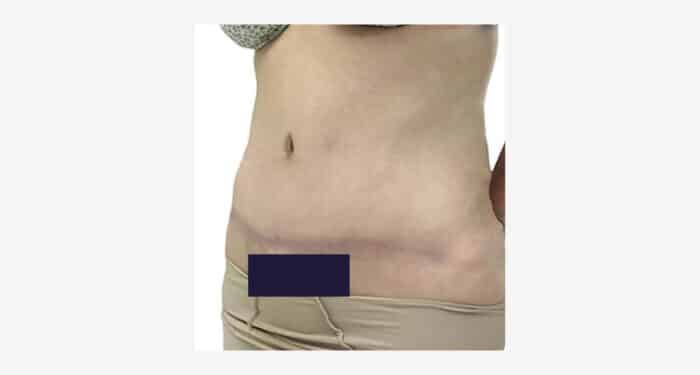
“This 43-year-old woman had very stretched abdominal muscles, caused by prior pregnancies and large fibroids, creating the very protuberant shape of her abdomen. She was an ideal candidate for tummy tuck and liposuction of the flanks. In a single surgery, her gynecologist removed the fibroids, which decompressed her abdomen, and then I removed all the stretched skin from above her belly button to her pubic bone while also tightening her muscle layer.
“Her excellent healing is due to her eating a balanced diet, not smoking, and not taking any steroid medicines as well as to meticulous surgical closure. I also used a tension-relieving device called a wound VAC. We were aggressive with scar therapy and used tension-reducing silicone sheeting, moisture therapy, and laser scar treatment—again, by Dr. Sherber—which helped to fade her scar over two years.” —Dr. Rad
Day two post-op through three years post-op
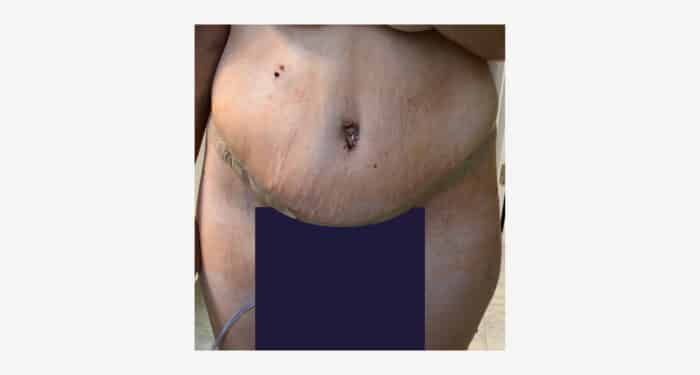
“I had a 360 tummy tuck in November 2018. This first photo was taken on day two post-op, my first shower. Lots of swelling, and my plastic surgeon used tape that couldn’t be removed yet. This is the time frame when many patients get the post-surgery blues (you see it a lot on RealSelf). Everything hurts and is swollen, and nothing looks good. Even knowing all of this going in and saying that I wouldn’t get those blues, I 100% did! Give your body time to heal—and stay positive. There are so many factors that influence scarring. For me, I tend to scar well, but I still made sure to follow my surgeon’s instructions to the letter. Post-op care immediately following surgery can set you up for success.” —Christina, tummy tuck patient
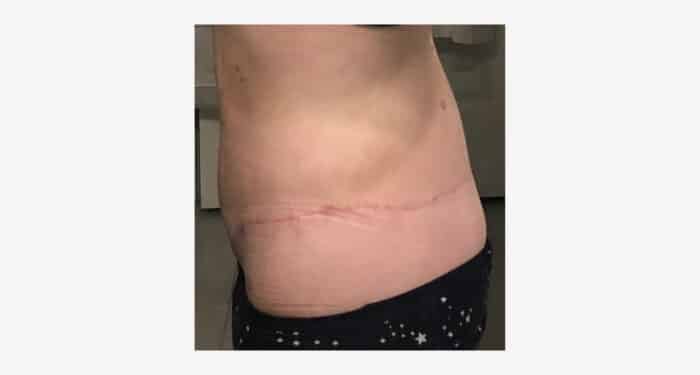
“This was taken at 12 weeks post-op. My results are starting to show. The scar is thin, flat, and still very red.” —Christina
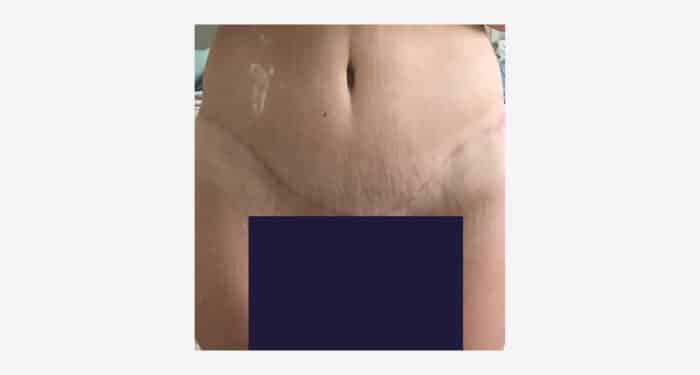
“Six months: my scar is fading.” —Christina
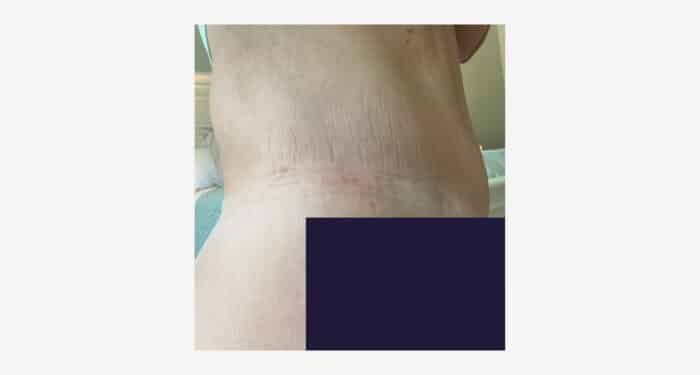
“At almost three years post-op, my scar is white, flat, and thin—nearly invisible. I can wear a string bikini, no problem. I have been able to do that since about three months out, due to the thin, flat nature of the scar. At that point, any residual redness just looked like the lines you get from a bathing suit.” —Christina







